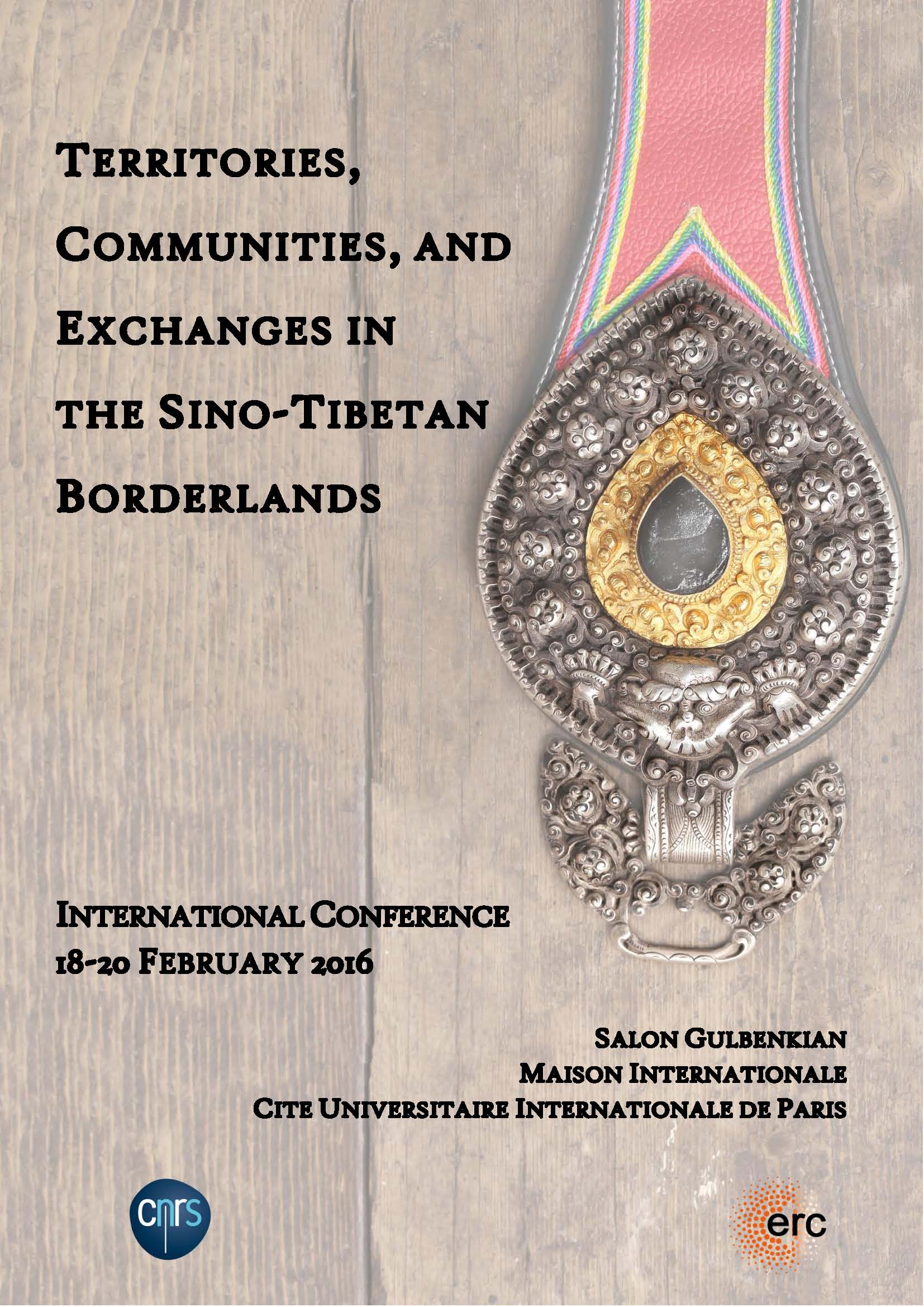Notice
Dawa Drolma (Bay Path University), " The Renaissance of Traditional Dzongsar Craft-making in the Meshö Valley: An Insider’s Perspective on New Economic Processes and Identity Transformations in Sino-Tibetan Borderlands "
- document 1 document 2 document 3
- niveau 1 niveau 2 niveau 3
Descriptif
As a member of a deeply-rooted traditional craft-making family in the Meshö (Sman Shod) Valley of Kham region, I will present the results of my ongoing fieldwork and academic study on the renaissance of Buddhist craft-making that is beginning to flourish in the Sino-Tibetan borderlands. Meshö is a remote valley in Dergé County (Kandze Tibetan Autonomous Prefecture), Sichuan Province, where the majority of its 5,343 residents are agro-pastoralists. The area is famous for the monastery of Dzongsar, one of the largest monastic universities in Kham during the first half of the twentieth century. In the 1980s, when the renovation of the monastery was permitted, the lack of specialists in traditional handicrafts pushed the monastic authorities to establish workshops headed by the few remaining elderly craftsmen who retained traditional craft-making knowledge and skills. In the early twenty-first century, these workshops have become real schools of traditional crafts through local and foreign funding, and are now managed by a local NGO: Yuthok Yondengonpo Medical Association (YYMA). There are now more than 27 workshops, in which 13 different traditional crafts (lost-wax-casting, pottery, thangka painting, wood carving, etc.) are taught to around 450 apprentices. My paper will focus upon how new trade opportunities are transforming economic, familial, and community networks that surround these craft workshops. I will particularly deal with the demographic profile of teachers and apprentices, the challenges faced by local crafts workshops regarding modernization, and the raise of art and crafts entrepreneurs in Kham. I will also consider the reaction of local authorities to the rapid growth of the crafts industry.
International conference “Territories, Communities, and Exchanges in the Sino-Tibetan Kham Borderlands,” Februray 18-20, 2016. This conference is an outcome of a collaborative ERC-funded research project (Starting grant no. 283870).
For more information, please visit the project's Website: http://kham.cnrs.fr
Thème
Dans la même collection
-
Lucia Galli (University of Oxford), "The Price of Enlightenment: The Travel Account of Kha stag ʼDz…
Frontier territories characterised by intense socio-economic, political, and cultural inter-actions, in the mid-nineteenth century the easternmost fringes of the Tibetan plateau saw the rise of the
-
John Bray, "French Catholic Missions and Sino-Tibetan Trade: Local Networks and International Enter…
The Missions Étrangères de Paris (MEP) sent their first missionary on an exploratory mission to the Sino-Tibetan borderlands in 1847, and they retained a presence in the region until 1952. Together
-
C. Pat Giersch (Wellesley College), "Patterns of Inclusion and Exclusion Along Twentieth-Century Ch…
In recent years, increasingly sophisticated work has traced the remarkable changes in early twentieth-century state-building along China's southwestern and Tibetan borderlands. During this same period
-
Yudru Tsomu (Sichuan University), " Rise of a Political Strongman in Dergé in the Early Twentieth C…
This paper discuses rivalry for the throne of Dergé between 1890 and 1940. In the late nineteenth and early twentieth centuries, internecine feuds created a power vacuum serious enough to invite
-
Katia Buffetrille (Ecole Pratique des Hautes Etudes), " The Increasing Visibility of the Borderland…
For centuries, Central Tibet and its capital Lhasa were regarded as the center—as is obviously expressed in the very name of the region in Tibetan, dBus, “Center”—of political and religious life in
-
Scott Relyea (Hamline University), " Settling Authority: Sichuanese Farmers in Early Twentieth Cent…
From 1907 to 1911, some 4,000 commoners from the Sichuan Basin ventured west. Enticed by promises of large tracts of uncultivated land and three years of free rent, seeds, animals, and farm implements
-
Chen Bo (Sichuan University), “House Society” Revisited "
In this paper, I will begin by considering the concept of “house society” and its applicability to Southwest China. I ask the question of why no scholar, Levi-Strauss included since he originally
-
Dáša Mortensen (University of North Carolina at Chapel Hill), " Wangchuk Tempa and the Control of G…
This paper examines the fascinating life of Wangchuk Tempa 汪学鼎 (1886-1961), the de facto early-twentieth-century political and military leader of Gyalthang (rGyal Thang) in southern Kham, in order to
-
Mark Frank, " Chinese Physiocracy: Kham as Laboratory for the Agrarian Theory of China "
When a nation-state looks to intensive agriculture for its national essence, what are the implications at the local level? This paper looks at agricultural colonization efforts (tunken屯垦) of the
-
Stéphane Gros (Centre National de la Recherche Scientifique), "Matrifocality and the House in Drapa…
GrosStéphaneThe practice of a non-contractual, nonobligatory, and nonexclusive visiting sexual system among a matrilineal group in Southwest China has generated as much interest in anthropology as in the mass
-
Tenzin Jinba (National University of Singapore), " Two Gyalrong Weddings Under Fire: Rethinking of …
Two weddings in 2009 and 2015 respectively have received wide publicity among Tibetans and others within and out of China. The first was that of Lobsang Dundrup, a renowned singer from Gyalrong, and
-
Eric Mortensen (Guilford College)," Boundaries of the Borderlands : Mapping Gyalthang"
This project seeks to discern the physical and conceptual boundaries of the Tibetan region of Gyalthang, in southern Kham. At issue are questions about the relationships between older













